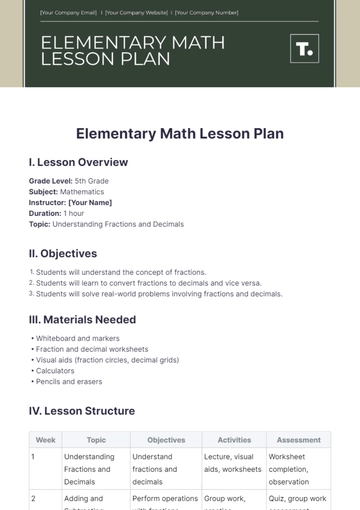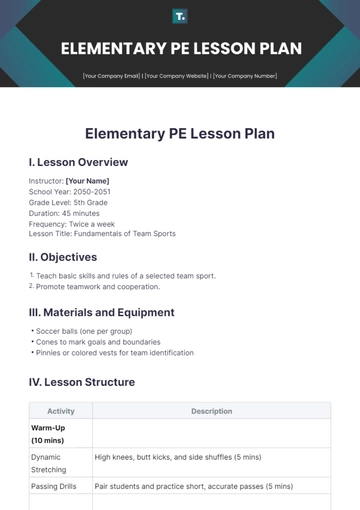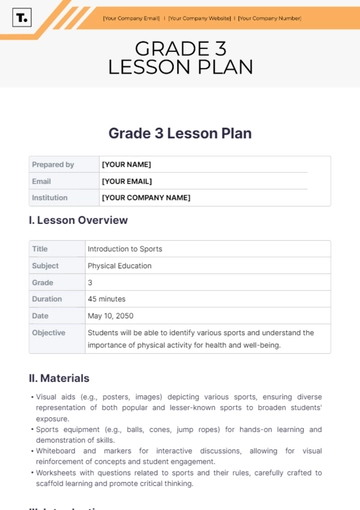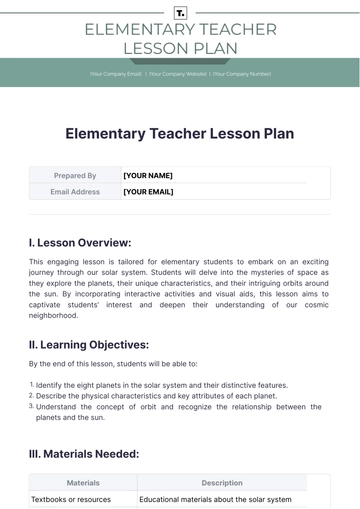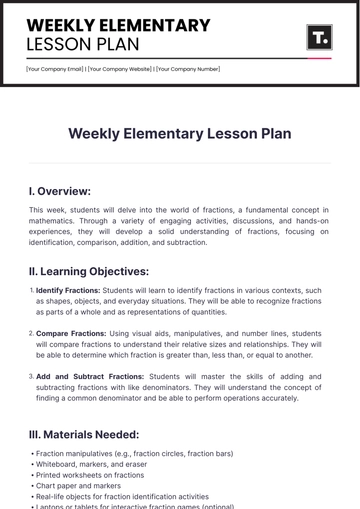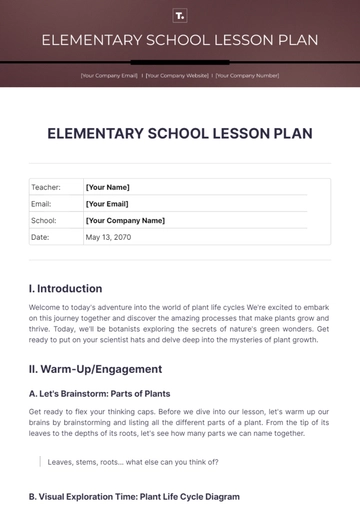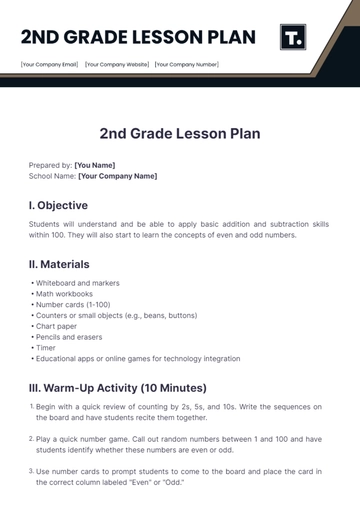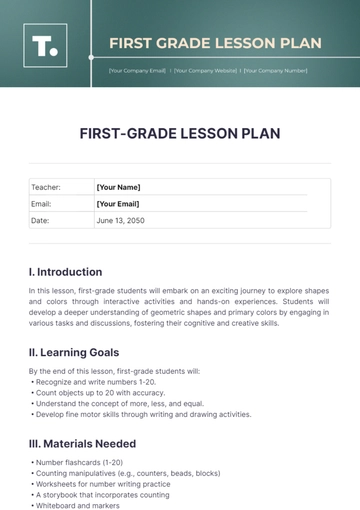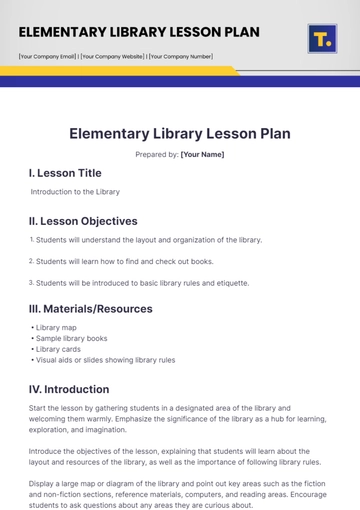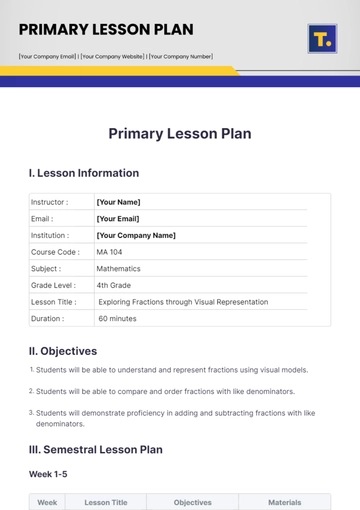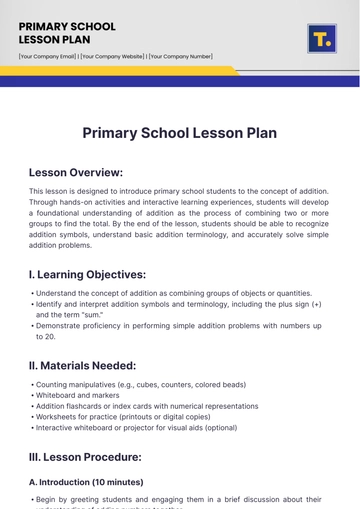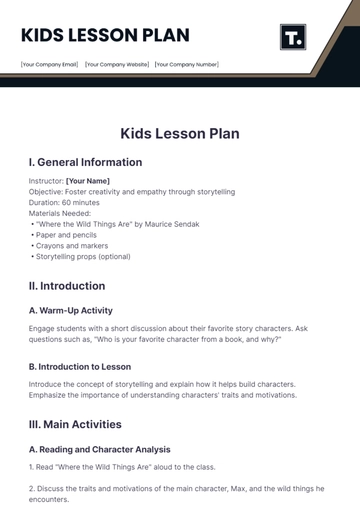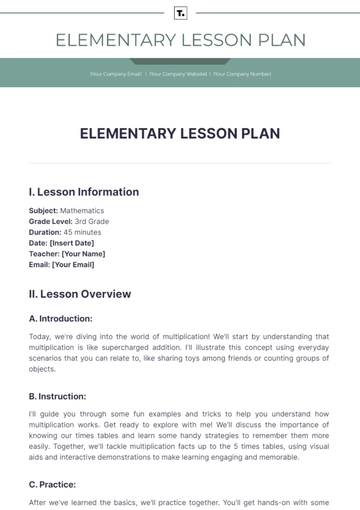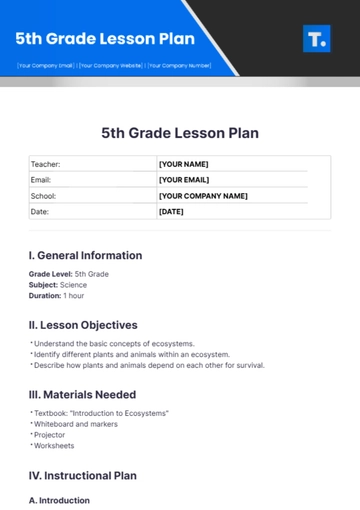Free Kids Lesson Plan
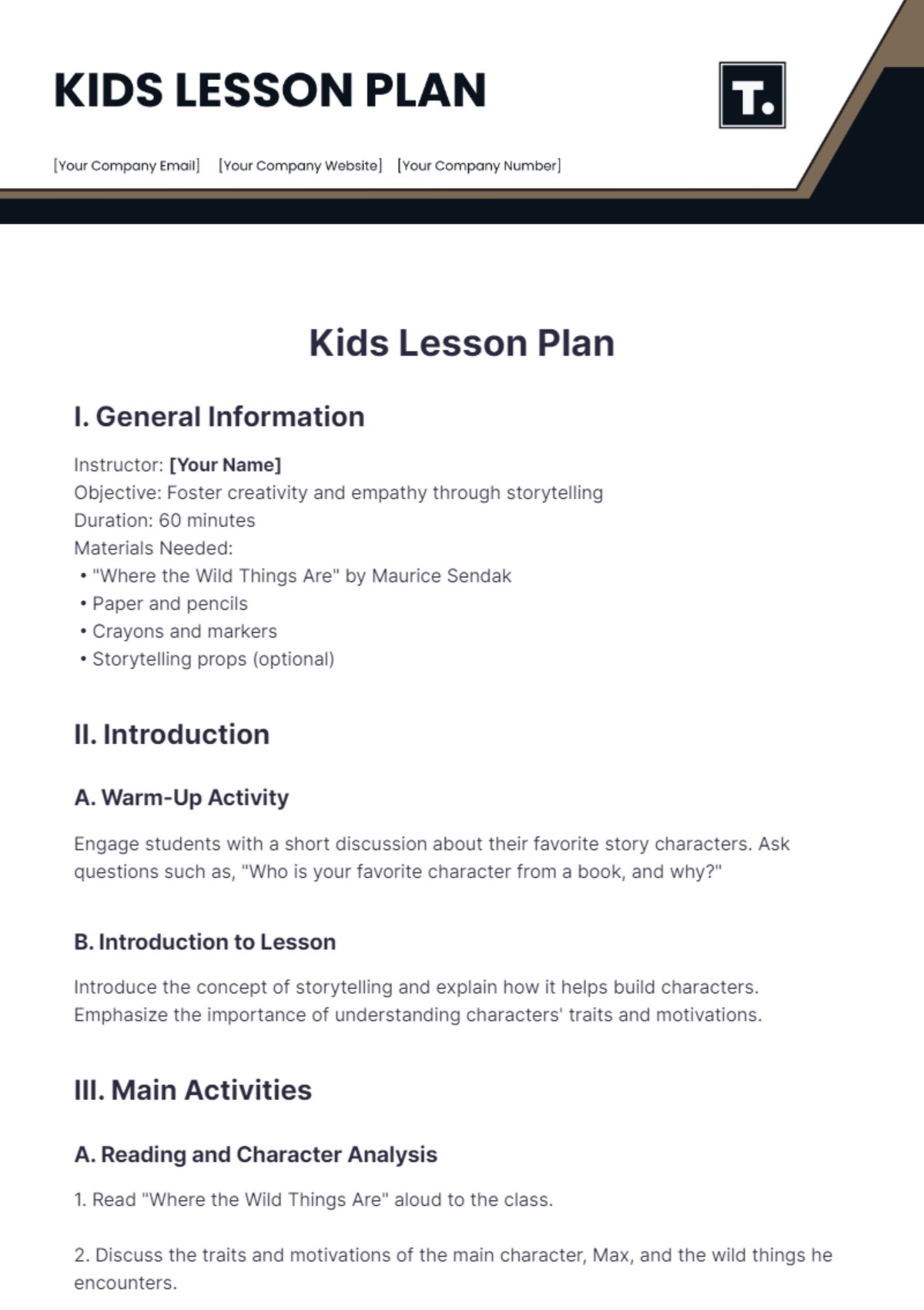
I. General Information
Instructor: [Your Name]
Objective: Foster creativity and empathy through storytelling
Duration: 60 minutes
Materials Needed:
"Where the Wild Things Are" by Maurice Sendak
Paper and pencils
Crayons and markers
Storytelling props (optional)
II. Introduction
A. Warm-Up Activity
Engage students with a short discussion about their favorite story characters. Ask questions such as, "Who is your favorite character from a book, and why?"
B. Introduction to Lesson
Introduce the concept of storytelling and explain how it helps build characters. Emphasize the importance of understanding characters' traits and motivations.
III. Main Activities
A. Reading and Character Analysis
1. Read "Where the Wild Things Are" aloud to the class.
2. Discuss the traits and motivations of the main character, Max, and the wild things he encounters.
B. Creating Characters
1. Guide students in creating their own characters. Encourage them to think about what their characters look like, what they enjoy doing, and what challenges they might face.
2. Provide examples of character profiles and brainstorming sheets to help students develop their characters.
C. Story Writing or Role-Playing
1. Have students write short stories featuring their characters. Encourage them to include details about their characters' personalities and adventures.
2. Alternatively, facilitate role-playing activities where students act out scenes with their characters. Encourage them to stay true to their characters' traits and motivations.
IV. Conclusion
A. Reflection
The conclusion of the lesson involves a reflective discussion aimed at consolidating the learning on character building and storytelling. Through guided questions, students will delve into their creative processes, considering how they decided on character traits and the challenges their characters faced in their stories. This reflective exercise encourages students to articulate their understanding of character development and story elements, fostering deeper comprehension.
B. Wrap-Up Activity
To conclude the session, a wrap-up activity will provide students with the opportunity to showcase their stories and characters. Each student will share their story or enact a scene featuring their character. Through this sharing, students celebrate the diversity of ideas and talents within the class.
Additionally, students will offer feedback to their peers, highlighting aspects they appreciated about each other's work. This collaborative activity promotes a supportive learning environment and encourages students to engage with and learn from each other's creations.
V. Assessment
A. Criteria
Assessment criteria focus on evaluating key aspects of student engagement and learning during the lesson:
CRITERIA | DESCRIPTION |
|---|---|
Creativity in character creation | Students' ability to develop unique and compelling characters, considering traits, motivations, and backgrounds |
Clarity and coherence in storytelling | The organization of ideas, plot development, and coherence of narrative elements in students' stories |
Engagement in role-playing activities | Students' active participation and embodiment of characters during role-playing exercises, demonstrating immersion in the storytelling process |
B. Evaluation Method
Assessment will be conducted through a combination of teacher observation and peer feedback. Teachers will observe students' creativity, communication skills, and participation levels during activities. Peer feedback will provide students with opportunities to offer constructive comments on their peers' work, fostering accountability and encouraging reflection on their own contributions to the lesson.
- 100% Customizable, free editor
- Access 1 Million+ Templates, photo’s & graphics
- Download or share as a template
- Click and replace photos, graphics, text, backgrounds
- Resize, crop, AI write & more
- Access advanced editor
Make learning fun and effective with the Kids Lesson Plan Template, proudly offered by Template.net. This vibrant, customizable template is designed to engage young minds. Easily downloadable and printable, it helps you create structured and exciting lessons. Editable in our AI Editor Tool, this template allows you to adapt each lesson to the unique interests and abilities of your students.
